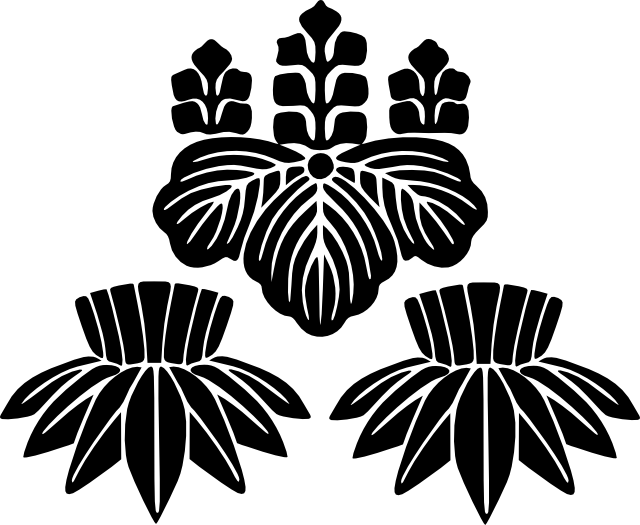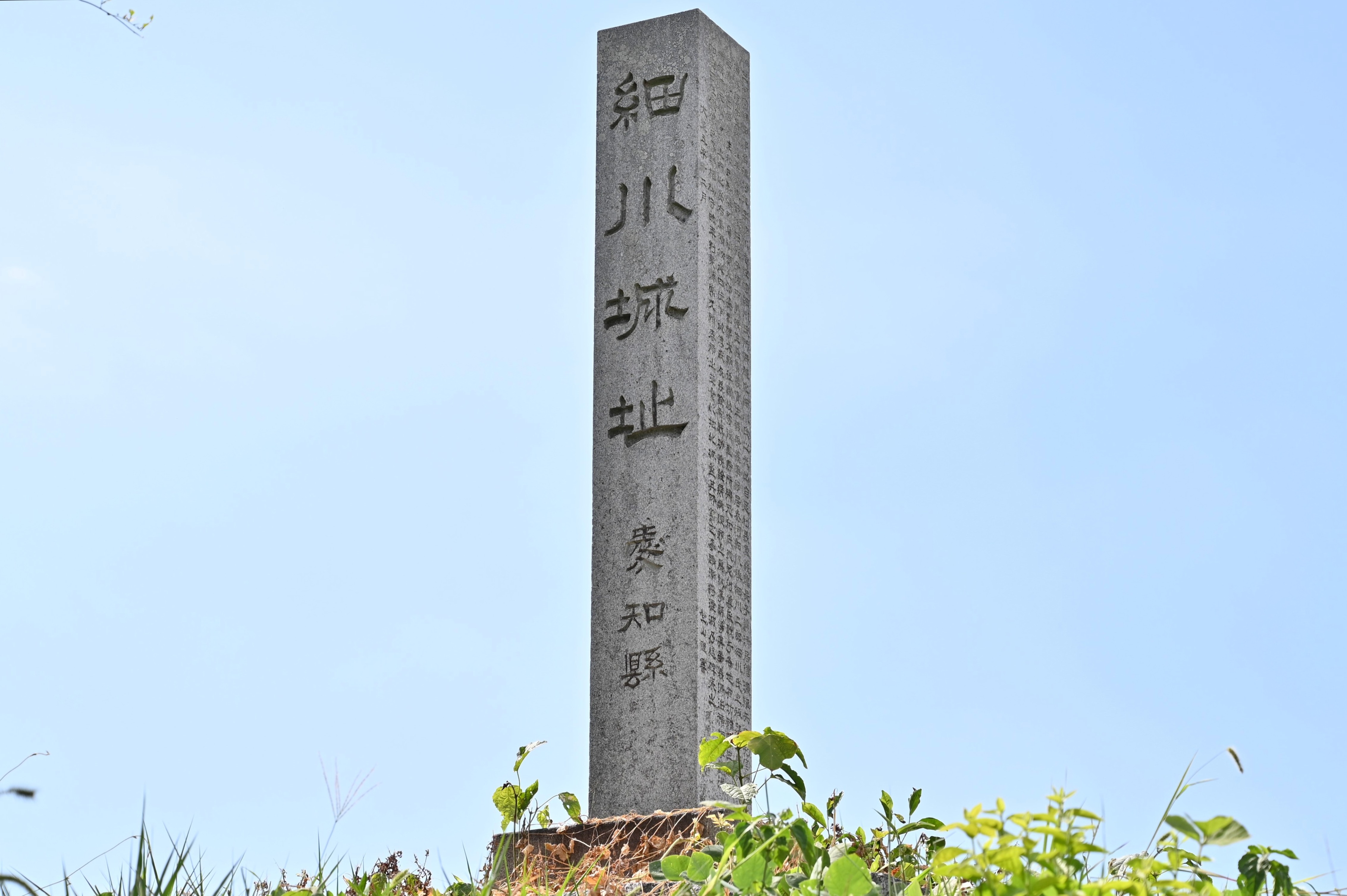|
Yakami Castle
was a Sengoku period Japanese castle located in what is now part of the city of Tamba-Sasayama Hyōgo Prefecture, Japan. Its ruins have been protected as a National Historic Site since 2005.The castle was one of the largest in Tanba Province, along with Kuroi Castle and Yagi Castle. It was the original base of power for the Hatano clan. History Yagami Castle is located on 400-meter Most Tashiroyama to the southeast of the modern city center of Tamba-Sasayama in former Tanba Province. Tanba is very mountainous, but due to its proximity to the capital at Kyoto, it was regarded as having high strategic values. Settlement was mostly in four mountain basis, Hikami and Sasayama in what is now Hyōgo and Fukuchiyama and Kameoka in what is now Kyoto Prefecture. During the Muromachi period, the ''shugo'' of the province was the Hosokawa clan, who ruled through their deputy, the Naito clan. However, following the Onin War, the Hosokawa clan was greatly weakened and divided by internal ... [...More Info...] [...Related Items...] OR: [Wikipedia] [Google] [Baidu] |
Tamba-Sasayama
, formerly known as , is a city in the central eastern part of Hyōgo Prefecture, Japan. , the city had an estimated population of 40,050 in 17523 households and a population density of 110 persons per km2. The total area of the city is Geography Tamba-Sasayama is located in an inland basin surrounded by mountains on all sides in the eastern part of the prefecture. It is located in the mountains between the Seto Inland Sea and the Sea of Japan. The city has a slightly rectangular area east–west and north–south. Neighboring municipalities Hyōgo Prefecture * Tamba * Nishiwaki * Sanda * Katō * Inagawa Osaka Prefecture *Nose Kyoto Prefecture * Nantan *Fukuchiyama * Kyōtamba Climate Tamba-Sasayama has a Humid subtropical climate (Köppen ''Cfa'') characterized by warm summers and cool winters with light to no snowfall. The average annual temperature in Tamba-Sasayama is 13.3 °C. The average annual rainfall is 1582 mm with September as the wettest month. The tempe ... [...More Info...] [...Related Items...] OR: [Wikipedia] [Google] [Baidu] |
Kyoto
Kyoto (; Japanese: , ''Kyōto'' ), officially , is the capital city of Kyoto Prefecture in Japan. Located in the Kansai region on the island of Honshu, Kyoto forms a part of the Keihanshin metropolitan area along with Osaka and Kobe. , the city had a population of 1.46 million. The city is the cultural anchor of a substantially larger metropolitan area known as Greater Kyoto, a metropolitan statistical area (MSA) home to a census-estimated 3.8 million people. Kyoto is one of the oldest municipalities in Japan, having been chosen in 794 as the new seat of Japan's imperial court by Emperor Kanmu. The original city, named Heian-kyō, was arranged in accordance with traditional Chinese feng shui following the model of the ancient Chinese capital of Chang'an/Luoyang. The emperors of Japan ruled from Kyoto in the following eleven centuries until 1869. It was the scene of several key events of the Muromachi period, Sengoku period, and the Boshin War, such as the Ōnin War, the Ho ... [...More Info...] [...Related Items...] OR: [Wikipedia] [Google] [Baidu] |
Yamana Clan
The was a Japanese samurai clan which was one of the most powerful of the Muromachi period (1336-1467); at its peak, members of the family held the position of Constable (''shugo'') over eleven provinces. Originally from Kōzuke Province, and later centered in Inaba Province, the clan claimed descendance from the Seiwa Genji line, and from Minamoto no Yoshishige in particular. The clan took its name from the village of Yamana in present-day Gunma Prefecture. They were valued retainers under Minamoto no Yoritomo, and counted among his ''gokenin''. The Yamana were among the chief clans in fighting for the establishment of the Ashikaga shogunate, and thus remained valued and powerful under the new government. They were Constables of five provinces in 1363, and eleven a short time later. However, members of the Yamana clan rebelled against the shogunate in the Meitoku Rebellion of 1391 and lost most of their land. Yamana Sōzen (1404 – 1473), likely the most famous member of the ... [...More Info...] [...Related Items...] OR: [Wikipedia] [Google] [Baidu] |
Takeda Clan
The was a Japanese samurai clan active from the late Heian period until the late 16th century. The clan was historically based in Kai Province in present-day Yamanashi Prefecture. The clan reached its greatest influence under the rule of Takeda Shingen, one of the most famous rulers of the period. History Origin The Takeda are descendants of the Emperor Seiwa (858–876), the 56th Emperor of Japan, and are a branch of the Minamoto clan (Seiwa Genji), by Minamoto no Yoshimitsu (1056–1127), son of the '' Chinjufu-shōgun'' Minamoto no Yoriyoshi (988-1075), and brother to the famous Minamoto no Yoshiie (1039–1106). Minamoto no Yoshikiyo (1075–1149), son of Yoshimitsu, was the first to take the name of Takeda, which he took when his father granted him Takeda domain in Hitachi Province; thereafter, he was known as Takeda Yoshikiyo. Kamakura to early Azuchi–Momoyama periods In the 12th century, at the end of the Heian period, the Takeda family-controlled Kai Province. Alon ... [...More Info...] [...Related Items...] OR: [Wikipedia] [Google] [Baidu] |
Oda Nobunaga
was a Japanese ''daimyō'' and one of the leading figures of the Sengoku period. He is regarded as the first "Great Unifier" of Japan. Nobunaga was head of the very powerful Oda clan, and launched a war against other ''daimyō'' to unify Japan in the 1560s. Nobunaga emerged as the most powerful ''daimyō'', overthrowing the nominally ruling shogun Ashikaga Yoshiaki and dissolving the Ashikaga Shogunate in 1573. He conquered most of Honshu island by 1580, and defeated the ''Ikkō-ikki'' rebels in the 1580s. Nobunaga's rule was noted for innovative military tactics, fostering of free trade, reforms of Japan's civil government, and the start of the Momoyama historical art period, but also for the brutal suppression of those who refused to cooperate or yield to his demands. Nobunaga was killed in the Honnō-ji Incident in 1582, when his retainer Akechi Mitsuhide ambushed him in Kyoto and forced him to commit . Nobunaga was succeeded by Toyotomi Hideyoshi, who along with Toku ... [...More Info...] [...Related Items...] OR: [Wikipedia] [Google] [Baidu] |
Kuruwa
is a Japanese term for the walls of a Japanese castle, and the regions bounded by the arrangement of those walls. The term may also be written as 郭, and the term is also used for castles built after the Edo period. The kuruwa serves as a defensive territory, provides space for additional castle facilities, and contains the living quarters for common soldiers, making it an important fixture of all Japanese castles. Most castles built during the middle ages contain many kuruwa of small area, while those built during or after the early modern period often contain a lesser number of kuruwa of larger area. The western equivalent is the motte-and-bailey. Arrangement The shape and structure of a castle were important factors in determining the victor of castle sieges, and the castle layout, or was arranged with the intention of giving the defender an insurmountable advantage. The kuruwa regions were planned for after the basic layout of the castle grounds was decided. The three ba ... [...More Info...] [...Related Items...] OR: [Wikipedia] [Google] [Baidu] |
Akai Naomasa
was a Japanese samurai leader of the Sengoku period.Ōta, Gyūichi ''et al.'' (2011)''The Chronicle of Lord Nobunaga,'' p. 323 n32 He was known as a brave and skillful warrior so his nickname was 'red Oni (demon) of Tamba Province'. Naomasa is known for his defense of Kuroi Castle in Tamba Province. In 1578, during the siege of Kuroi Castle, he died of disease; and the responsibility for defending the castle passed to his nephew, Akai Tadaie. After the death of Akai Naomasa, some members of the Akai clan became retainers under Tōdō Takatora. References Samurai 1529 births 1578 deaths {{Samurai-stub ... [...More Info...] [...Related Items...] OR: [Wikipedia] [Google] [Baidu] |
Matsunaga Hisahide
Matsunaga Danjo Hisahide (松永 弾正 久秀 1508 – November 19, 1577) was a ''daimyō'' and head of the Yamato Matsunaga clan in Japan during the Sengoku period of the 16th century. Biography He was a retainer of Miyoshi Nagayoshi from the 1540s. He directed the conquest of the province of Yamato Province, Japan, Yamato in the 1560s and by 1564 had built a sufficient power base to be effectively independent. It is believed that he was conspiring against Nagayoshi during this period, from 1561 to 1563 three of Nagayoshi's brothers and his son, Yoshiaki, died. This left Miyoshi Yoshitsugu the adopted heir when Nagayoshi died in 1564, too young to rule. Three men shared his guardianship – Miyoshi Nagayuki, Miyoshi Masayasu, and Iwanari Tomomichi. He then invaded the ''shōgun'' Ashikaga Yoshiteru's palace, who then committed suicide. His brother Ashikaga Yoshiaki fled and the shōgun was replaced by his young cousin, Ashikaga Yoshihide, Yoshihide. In 1566, fight ... [...More Info...] [...Related Items...] OR: [Wikipedia] [Google] [Baidu] |
Hatano Tanemichi
Hatano (written: 波多野, 羽多野, 秦野 or 畑野) is a Japanese surname. Notable people with the surname include: *, Japanese politician *, Japanese footballer *, Japanese ''daimyō'' *, Japanese model and actress *, Japanese psychologist and writer *, Japanese voice actor *, Japanese mezzo-soprano *, Grand Chamberlain of Japan (1912) *, Japanese philosopher *, Japanese voice actor *, Japanese composer and arranger *, Japanese actress {{surname, Hatano Japanese-language surnames ... [...More Info...] [...Related Items...] OR: [Wikipedia] [Google] [Baidu] |
Onin War
Onin may refer to: * Ōnin, a Japanese era ** Ōnin War * Onin peninsula, on the Bomberai Peninsula Bomberai Peninsula ( id, Semenanjung Bomberai), otherwise known as the Bird's Beak Peninsula ( id, Semenanjung Paruh Burung), is located in the Western New Guinea region, opposite to and to the south of the Bird's Head Peninsula. To the west lies ... of Indonesian Papua * Onin language, an Austronesian language spoken on the peninsula {{Disambiguation ... [...More Info...] [...Related Items...] OR: [Wikipedia] [Google] [Baidu] |
Hosokawa Clan
The is a Japanese Samurai kin group or clan. Ancestors # Emperor Jimmu # Emperor Suizei # Emperor Annei # Emperor Itoku # Emperor Kōshō # Emperor Kōan # Emperor Kōrei # Emperor Kōgen # Emperor Kaika # Emperor Sujin # Emperor Suinin # Emperor Keikō # Yamato Takeru # Emperor Chūai # Emperor Ōjin # Wakanuke Futamata no Kimi # Ohohoto no Kimi # Ohi no Kimi # Ushi no Kimi # Emperor Keitai # Emperor Kinmei # Emperor Bidatsu # Prince Oshisaka # Emperor Jomei # Emperor Tenji # Prince Shiki # Emperor Kōnin # Emperor Kanmu # Emperor Saga # Emperor Ninmyō # Emperor Montoku # Emperor Seiwa # Prince Sadazumi # Minamoto no Tsunemoto # Minamoto no Mitsunaka # Minamoto no Yorinobu # Minamoto no Yoriyoshi # Minamoto no Yoshiie # Minamoto no Yoshikuni # Minamoto no Yoshiyasu # (Ashikaga) Minamoto no Yoshikiyo # (Hirosawa) Ashikaga Yoshizane # (Ashikaga) Hosokawa Yoshisue History The clan was descended from the Seiwa Genji, a branch of the Minamoto clan, and ultimately from Emperor Se ... [...More Info...] [...Related Items...] OR: [Wikipedia] [Google] [Baidu] |




